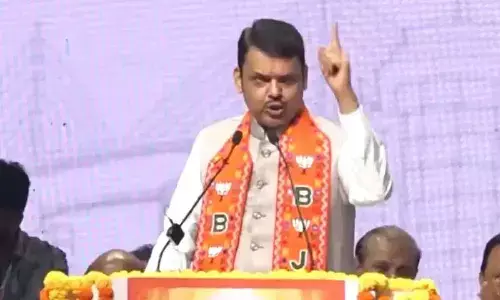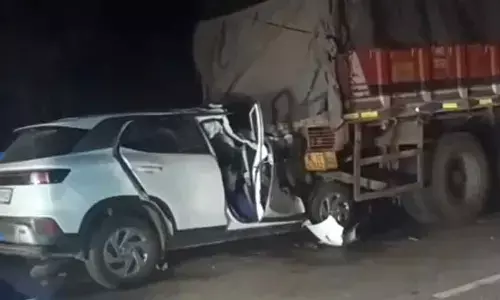Digital economy expanding fast, but govt processes not yet fully digitised

Digital economy expanding fast, but govt processes not yet fully digitised
Some of the govt websites need to be upgraded so that citizens can access them without any difficulty
The digital economy in India seems to be outpacing the traditional bricks and mortar segment. A study by the Reserve Bank of India has found that it is growing 2.4 times faster than overall economic growth. This finding only confirms what has become increasingly evident in daily life in both rural and urban settings. The use of digital technology at the marketplace and for financing needs is far more than in most other countries. What is significant is that the digital mode is being used even by those who are semi-literate and are yet able to carry out commercial transactions via mobile phones without any difficulty.
One of the reasons for the rapid spread of the digital economy has been the introduction of the UPI (united payments interface), Aadhar and the India Stack. Google chief Sundar Pichai has also lauded the value of having an open, connected stack that works along with responsible regulation. In fact, he has commented in an interview that India is likely to be a successful exporter in this digital economy. Google Pay, he pointed out, was based on the UPI stack. It is one of the few Google products that was launched first in India and is only now being brought to other countries. Not just Pichai, even the International Monetary Fund has recently lavished praise on the India Stack and the prospects of it being used as a model for digitisation by other emerging economies. It noted in a study that the expansion of digital payments facilitated by the stack, is an important driver of economic development in India.
To clarify, a 'stack' is a combination of technological projects which are required to operate various applications such as computer languages, libraries or user interfaces and experiences. In India, a tech stack has been created for the entire country from identity to payments to other services. Incidentally it is the only tech stack that has a country name as the prefix.
The process of creating this stack began in 2009 with the setting up of the National Payments Corporation of India (NPCI) which aimed to modernise retail payments and settlements. This was followed by the creation of the Unique Identification Authority of India (UIDAI) headed by Infosys founder Nandan Nilekani. It was the latter who supervised the launch of the biometric identity system Aadhar and this in turn enabled the system of direct benefit transfers to beneficiaries of subsidies. While this has been the India story of digitisation, the RBI study has now captured data showing the extent of growth in this process. It has found that the country's digital economy grew in absolute terms from 107.7 billion dollars in 2014 to 222.5 billion dollars in 2019.
It thus grew by 15.6 per cent while the overall economy grew by only 6.59 per cent over this period. The study also found the size of the digitally dependent economy did not grow at the same pace as that of the core digital economy from 2014 to 2019. It surmised this could be because digital innovations impact the economy over a longer term.
The central bank's research has only reiterated the fact that India is a global leader in the use of digital technology to enable access to finance and commercial transactions even for those at the bottom of the pyramid. This process got accelerated during the pandemic when it became difficult for the general public to access traditional forms of banking or financing institutions. Digital payments have become the norm to the extent that even the smallest pavement vendor in urban centres is able to carry out online transactions through mobile phones.
In this context, it is relevant to note that government data says that 1.2 billion people have mobile phones in the country, of which 600 million are smartphone users. The smartphone penetration in the country remains lower than in the US or China. It is estimated that about 43.5 per cent people have smartphones here compared to nearly 60 per cent in China and 72 per cent in the US. But even feature phones can be used to access the internet and carry out online activity.
It is these phones that are the conduit for most commercial and financing transactions in the country. The government has utilised the entire digital ecosystem of the India Stack by ensuring that subsidies and funds meant for the poorest actually reach the target beneficiaries. This has been a game changer for many schemes as leakages in the system which had been highlighted by political leaders like former Prime Minister Rajiv Gandhi have been eliminated to a large extent.
In this context, it must be noted that many of the apps devised by government agencies have proved extremely successful and effective. For instance, the Cowin app which initially got off to a rocky start ultimately, it became easy to book vaccinations and also to access the certificate without resorting to hard copies. It was External Affairs Minister S Jaishanker who pointed to the contrast between his son in the US having to rely on a hard copy of the vaccination certificate while his own was digital and available with ease on the phone.
Even so, some of the government websites need to be upgraded so that citizens can access them without any difficulty. This is essential as India has taken a leadership role in the G-20 and is expected to keep digital technology as a focus area. Even more important is the need to remove the requirement for physical interface as far as possible. This will heighten the ease of doing business for investors who are in any case faced with the task of getting multiple approvals for new projects. Thus the digital economy may have expanded rapidly, but government needs to integrate it even further into all its interfaces with both investors and the common man.















